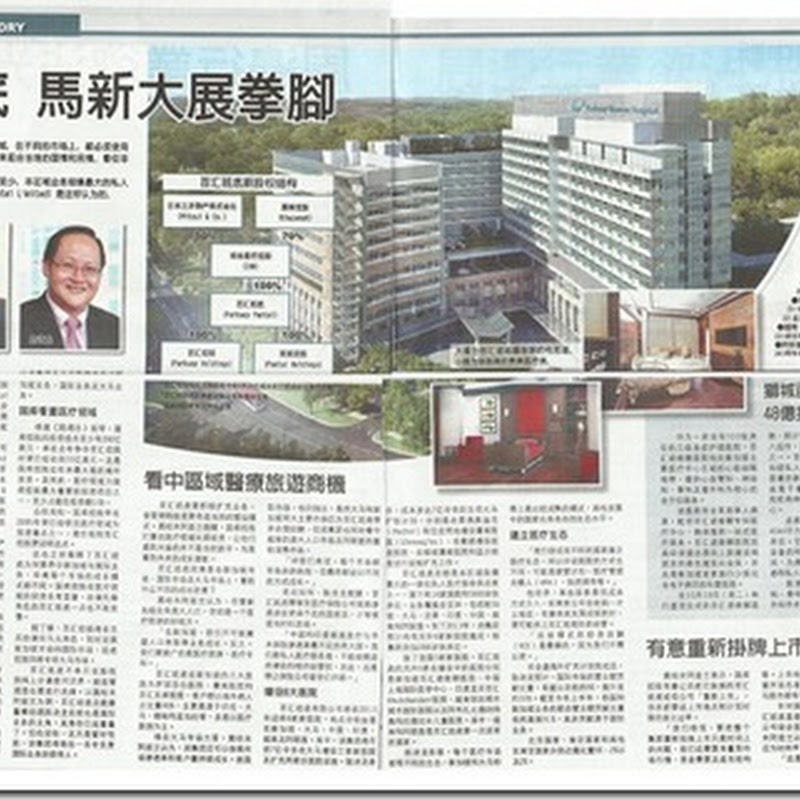CSC STEEL is likely to improve with the economic turnaround said research house INSIDERASIA on Sep 1, 2009. Stronger earnings for 2QE Jun 2009 provide the basis for such optimism.
CSC STEEL's QoQ Turnover for 2QE Jun 2009 was down by about 7% to RM161.6m. This was due mainly to lower selling prices during the quarter. Prices for cold rolled steel (CRS) fell below USD500 (RM1,765) per tonne at its lowest in Apr 2009, compared to the average price of around USD600-USD700 per tonne in 1QE Mar 2009.
Sales volume, however, registered improvement, which helped offset somewhat the price decline. Volume demand is recovering from the steep dropoff in 4QE Dec 2008 to 1QE Mar 2009, aided by both inventory restocking and some recovery in underlying demand.
ENDUSERS RESTOCKING & PLANT UTILISATION IMPROVES
The Company added that many user companies had run down on inventory for the better part of 4QE Dec 2008 to 1QE Mar 2009 and have been gradually restocking. CSC's plant utilisation is estimated to have improved to over 70% currently, from under 50% in early 2009.
Profitability also improved in 2QE Jun 2009 compared with the immediate preceding quarter. Operating Margin widened to 11.5% compared to just 6.5% in 1QE Mar 2009. In addition to better plant utilisation, CSC also benefited from lower cost of raw materials, having run down on its high-cost stocks in the previous two quarters.
WRITE BACK
The Company also wrote back another RM2.4m in Provision for Doubtful Debts in 2QE Jun 2009, on top of the RM4.9m in 1QE Mar 2009. Excluding the Writebacks, Net Profit improved to RM7m in 2QE Jun 2009, a significant jump from the RM800k in 1QE Mar 2009.
NET CASH OF RM250M As at end of 2QE Jun 2009, CSC had Net Cash of RM250.7m - a significant 67 sen per share. The NTA per share amounted to RM1.88 per share.
DIVIDEND POLICY
The Company has a Dividend Policy of 50%.
DEMAND & STEEL PRICES LIKELY TO PICK UP IN 3QE 2009
Demand and prices are likely to pick up further in 3Q-CY2009. The flow of new orders has continued into 3Q-CY2009. End-user companies will likely keep stocking up in anticipation of improving consumer demand ahead of the upcoming festive season and end-of-year holidays.
Steel prices too have recovered from the lows registered in Apr 2009. Sharp production cutbacks by the big steel millers have kept a tight rein on global stockpiles, which has helped support higher prices.
IRON ORE PRICES RISING
Prices are also being supported by pricier raw materials. The cost of raw materials has been creeping higher with growing evidence that the global economic recession is abating. For instance, spot prices for iron ore have nearly doubled, after falling below USD60 per tonne, after annual contracts between miners and steel makers were concluded with a smaller-than-expected 33% discount from last year's prices and bolstered by China's growing demand.
The price for cold-rolled coils has risen above USD600 per tonne currently, compared with below USD500 per tonne in Apr 2009. Hence, we expect CSC to report stronger revenue and profits for 3QE Sep 2009 compared with 2QE Jun 2009 due to higher volume sales and selling prices.
DEMAND BEYOND 3Q-CY2009 UNCERTAIN
Consumer demand will determine sustainability of recovery. Visibility beyond 3QE CY2009 is, however, uncertain as much depends on consumer demand improving.
GLOBAL EXCESS OF STEEL-MAKING CAPACITY
INSIDERASIA opines that if sales for consumer products, like cars, electrical and electronics devices, turn out to be softer than expected, we may see renewed weakness in global demand for flat steel products. There is also a question of how quickly big steel makers ramp up their production levels against the underlying demand recovery. There remains a risk of oversupply, given the significant excess steel making capacity around the world.
NET PROFIT ESTIMATES
INSIDERASIA is of the view that CSC's Net Profit for 4QE Dec 2009 should be much higher than the RM800k recorded in 1QE Mar 2009 (after excluding the RM4.9m of Doubtful Debts Writeback). INSIDERASIA estimates Net Profit for full FYE Dec 2009 is estimated at roughly RM39.5m, which should expand further to about RM49m in 2010.
STEEL SECTOR OVERVIEW
In an analyst reveiw of steel companies for 2QE Jun 2009, it said that despite steel companies having reported poorer results for 2QE Jun 2009, expectations are high that their performance will soon pick up along with global sentiment on the commodity.
Poorer demand and slumping steel prices have severely affected Malaysian players.
STEEL PRICES
The 1HE CY2009, the steel industry saw an average of RM1,193.37 a tonne (according to the benchmark three-month London Metal Exchange Far East steel billet forward prices), after coming off their peaks from 3QE Sep 2008.
Steel players that reported earnings results included ANN JOO RESOURCES, KINSTEEL, PERWAJA HOLDINGS and MALAYSIA STEEL WORKS - all of which reported poorer results.
Steel prices in the past 12 months fluctuated from a high of RM2,340.90 per tonne in Sep 2008 before plunging to a low of RM890.57 in Oct 2008.
Steel prices have recovered since the end of Jun 2009, and has been trading above the RM1,400 per tonne mark. Analysts are saying that there is also greater visibility to the prospects of steel in the short-to medium-term. " .... The settlement of new iron ore benchmark prices for 2009/2010 has given steel prices a clearer direction in the year ahead (2010) ...." said OSK RESEARCH analyst NG SEM GUAN. " .... Also, our market sources suggest there is a possible upward revision in bars and other downstream products selling prices by RM100 to RM200 per tonne in the coming weeks ....".




















































